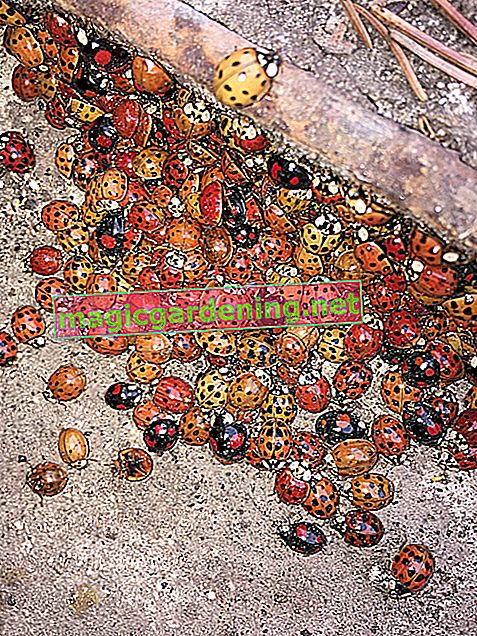
Rigid hibernation, hibernation or migratory bird behavior
In general, it is the case with ladybirds that they overwinter as a fully trained beetle, i.e. as an imago and not as a larva like other insects. Of the many different species of ladybirds, 3 groups with different wintering methods can be distinguished:
also read
- The promising eggs of the ladybug
- How ladybugs settle
- A wanted poster about the ladybug
1. The hibernation group
2. The migrants to the south
3. The migrants to the north
Winter sleeper
Most of the ladybird species that we find stay with us in winter and fall into hibernation or hibernation. To do this, look for wind-protected, damp spots such as piles of leaves, cracks in walls or moss beds. At temperatures below 12 ° C, the body of the cold-blooded beetle begins to fall into hibernation mode. Body functions such as heartbeat and breathing slow down and the body temperature drops to around 5 ° C. From the freezing point an even more economical body mode occurs, the rigid winter. Here, the body functions and the body temperature are reduced to 3-5% compared to the active mode.
Migrants to the south
Other species of ladybirds set out to winter like migratory birds in more southerly regions. Just like the feathered animals, they gather in large flocks and usually fly along the coasts after the warmer climate. Ladybugs that move south are dependent on sufficiently warm temperatures in winter because their organism cannot adapt to the cold with a low flame mode.
Migrants to the north
Strangely, other ladybugs move to even colder countries than ours in winter. This is because, in order to survive, they need rigid winter conditions and, accordingly, reliable, continuous freezing temperatures. The hibernation mode would wake them up too often, which in turn would lead to life-threatening energy consumption.








